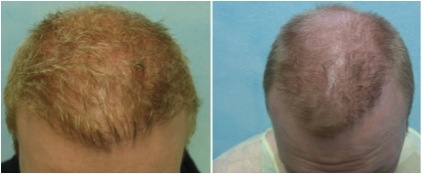
HAIR LOSS
Hairline loss is almost always a result of male pattern baldness, medically termed androgenic alopecia. When the ordinary hormone DHT/dihydrotestosterone comes into contact with genetically susceptible scalp follicles (made vulnerable by weak androgen receptors that were inherited through the parents’ X chromosomes), it shrinks them to destruction. This typically leads to hairline recession and crown hair loss of varying degrees.
An outlying cause of hairline recession is traction alopecia, which is most prominent in women of African decent.
HAIRLINE REPAIR
The hairline is the point where the bare, vertically flat forehead bends and adjoins to the horizontal hair-bearing scalp. But it is also a vital feature with regard to the aesthetics of the face. A receding hairline can completely destroy facial-skeletal proportions, producing an incongruously large forehead. Thus, hairline restoration is vitally important, and hairline repair even more so. Surgical methods of restoring the hairline include temporoparietal-occipital flap surgery, follicular unit transplant (FUT), and follicular unit extraction.
Flap surgery is an outdated method, yet many people still use it. This method cuts out a rectangular, hair-bearing flap of skin from either side of the head, rotates them toward the front, and affixes them to the hairline. The result is harsh and unnatural, with a sudden wall of hair springing up along the top of the face, directionally and angularly inaccurate.
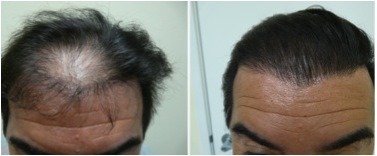
FUT, or strip harvesting, is one of today’s most popular methods of hair restoration. It works by cutting a strip of flesh from the patient’s mid-rear head. This wound is sewn or stapled shut and the strip dissected into follicular units for implantation. The area of harvest, called the traditional donor zone, is where hair on the scalp naturally grows thickest. Thus, the hairline result is often too harsh to appear natural.
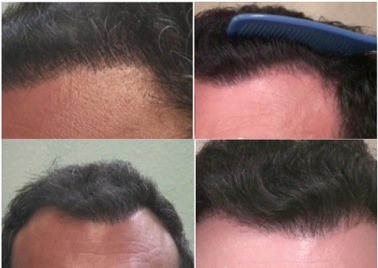
Hairline repair is at its best with FUE. This other commonly used hair restoration method is also the most advanced. The harvesting process excises each follicular unit individually from the scalp, nape, beard, or body. Being unconfined to the traditional donor zone, enables a much wider donor hair selection, which also means that the hair can be purposely selected for a disposition that suits the area of implantation. In other words, an FUE surgeon can use leg hair or nape hair—both soft and fine—to craft a gradual hairline that appears nature-made.
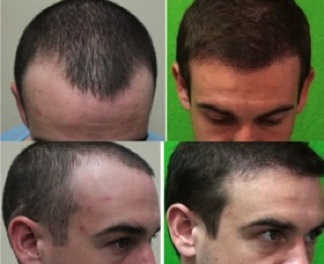
Technical considerations for hairline construction, whether it’s the first attempt or a second corrective surgery, include positioning of the hairline, shape, density, and the texture of hair used.
PHOTOS AND VIDEOS
Photos and videos provide prospective patients with an excellent opportunity to scrutinize surgeons’ work on past patients. Hairline repair results allow the viewer to observe placement of grafts, spacing, angulation, direction, texture, and density, as well as accuracy of hairline positioning and whether the shape complements the face. Be sure to review as many before-and-afters as possible to guide you toward the care of an advanced surgeon.
Photos and videos of worthy quality will show the outcome in focus, in good lighting, and from the front, left, and right sides of the face. Some clinics will photo-shop images, editing them or retouching them to improve the appearance. Never trust images that appear tampered with.
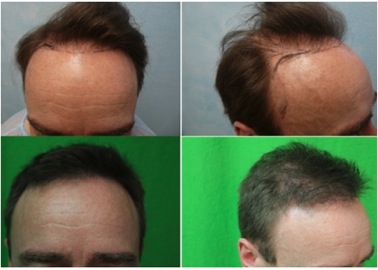
FAQ
What is traction alopecia?
When a person frequently wears hairstyles that create an abrasive pulling force on their hair, this results in traction alopecia over time. It manifests in scalp damage and scarring that causes hair loss along the peripheral edges of the scalp. Common hairstyles to avoid are braids, extensions, cornrows, and weaves.
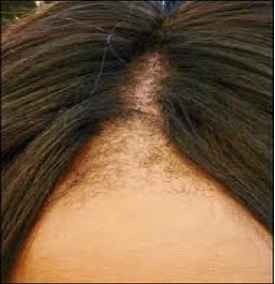
Is hairline repair used for anything else?
An accident or burn that causes acute loss along the hairline may necessitate a repair surgery. However, other frequent causes of hair loss like malnourishment, pregnancy, stress, hyper/hypothyroidism, lupus, diabetes, etc. usually cause a diffuse thinning that would entail a different course of treatment.
